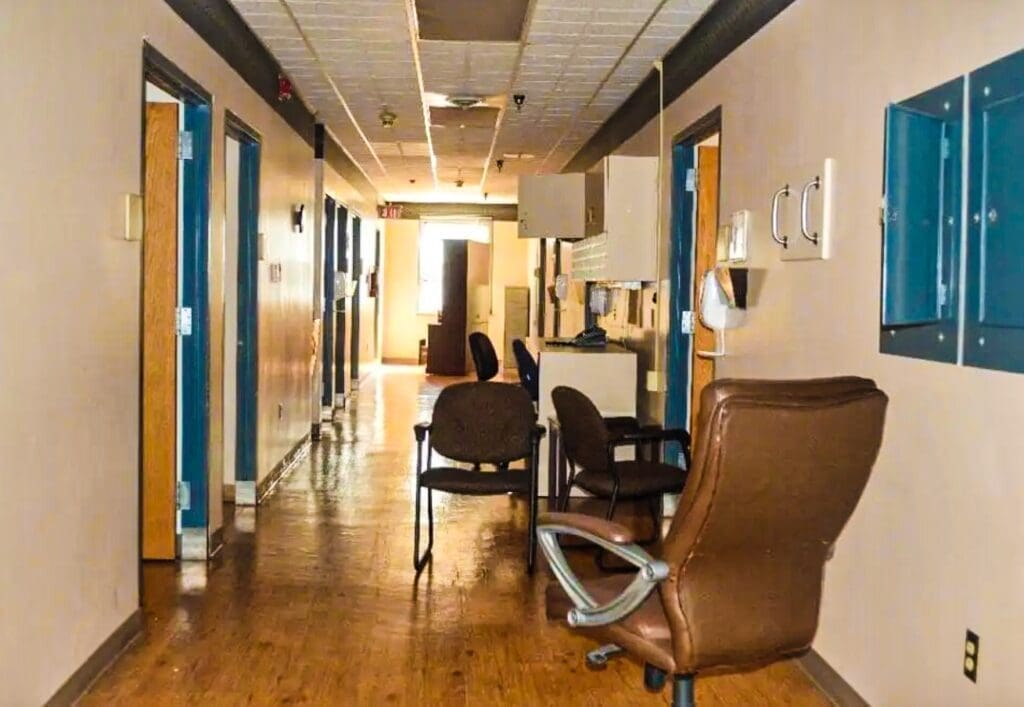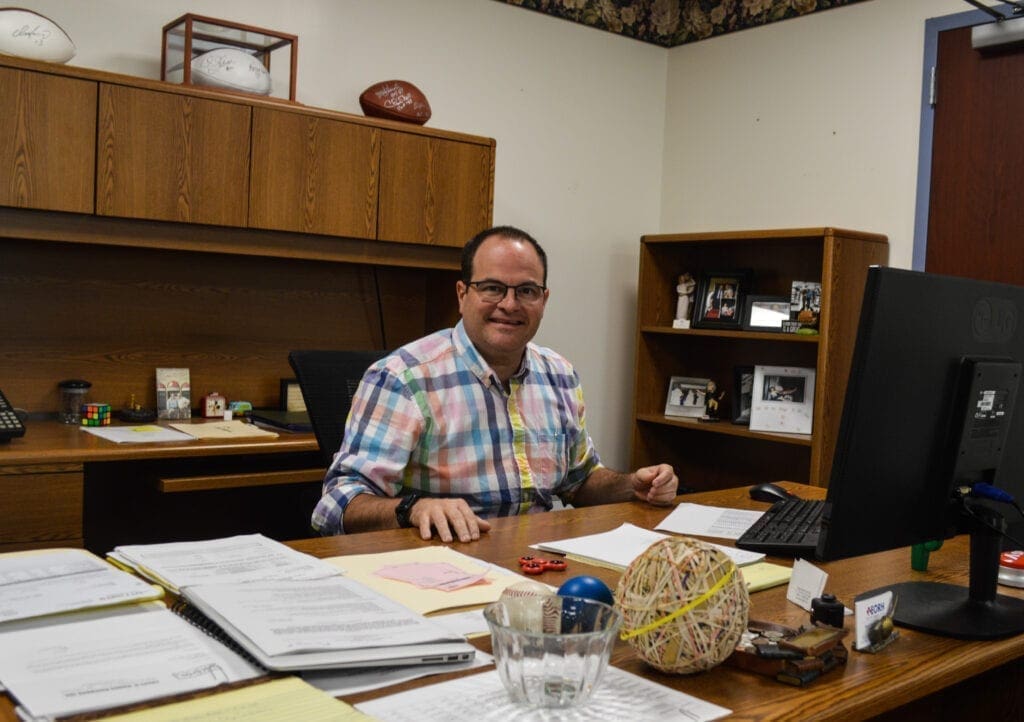
In the very beginning of Bernie Albertini’s career with Ohio Valley Medical Center Inc., he was in charge of all the pills. And then it was all of the food and the pills … and then it was all the food, all the pills, and all the pipes and lights and everything else involved with maintaining hospital campuses in Martins Ferry and Center Wheeling.
And it only took Albertini three years to collect those additional duties, but it wasn’t until 2011 when he was named the administrator of East Ohio Regional Hospital, the same medical facility he resurrected the past three years after Alecto Healthcare shuttered it in October 2019.
“When both of the hospitals were closed by Alecto, it was surprising to me because you really never think a hospital is going to fail. The Alecto model may not have fit here, but it still surprised me that they closed,” Albertini said. “How does a hospital fail when people are always getting sick from something? So, it was a little mind-boggling for me.
“But, while I was shocked, I wasn’t surprised, if that makes sense,” he said. “Honestly, I didn’t think they would close, and then both do. That, I think, was most surprising to me because I always believed they both could have been viable if run correctly.”
Albertini was retained by Alecto when the provider purchased both EORH and the OVMC campus in 2017, but he left for a COO position at the Canyon Vista Medical Center in Sierra Vista, Arizona, well before the closures. He stayed in the loop, though, and likely knew about the WARN notices before most of the employees.
“I don’t the ink was dry yet when I got a call,” Albertini said. “One reason I was so surprised both were closing was because I never found it an issue that both hospital were under that non-profit umbrella because when it comes to done to it, a non-profit doesn’t pay taxes. I believe non-profits can be operated with a little less business savvy because you’re not worrying about a profit margin at all. Plus, a non-profit is able to do so much more for its community and that was always one of my favorite parts.
“In the for-profit world, making improvements pay for themselves is what’s most important. As a hospital, you want to offer as many services as possible so your patients don’t have to worry about limitations in care when they need the care the most,” he said. “But, yes, the taxes … that’s the biggest difference.”

Irreplaceable History
The six, multi-floor buildings on the OVMC campus were built brick by brick during the course of the past century, but that’s not how the structures will be demolished later this year.
Instead, the former health buildings will be picked apart by large excavators and hauled away to nearby landfills. Once the land is cleared, WVU Medicine has pledged to construct a multi-million-dollar, 90,000-square-foot cancer center that will employ as many as 150 doctors and staff members.
When Alecto closed down the operations of OVMC, they laid off more than 800 employees.
“Employees were everywhere and the OVMC campus is absolutely huge,” Albertini insisted. “It is every bit of 800,000 square feet, and I’m not sure how many people realize that number or how big that number is when it comes to buildings.
“It was a lot of upkeep when I was in charge of it and it was a very difficult job to keep up all of the needs that older buildings like them need,” he said. “It’s a very long list of upgrades and repairs that is constant and daily, and there were so many people there that nothing got past them.”
Ironically, as far as Albertini was concerned, it was the newest building that provided him the most problems.
“I can tell you that, after being there as the person in charge of facilities, that the West Tower was a constant challenge,” he reported. “The plumbing was a constant problem. We had a new leak every day, and that was just one reason why it was a very hard building to maintain.
“Now, the older buildings were better than the West Tower because they were constructed when the materials were always solid, like concrete and brick,” he said. “The demo crews are going to have a tough time with those older buildings, but the West Tower? It should fall right down because there was an issue with it every single day.”

Last Echoes Lost
He wasn’t a 9-5 guy, not when he was only the chief pharmacist and not when he was one of the administrators in charge of both EORH and OVMC.
“I tried it,” Albertini admitted. “It never worked for me. Normal hours just didn’t fit the job.”
Day, night, overnight even. “A hospital always is 24 hours day,” he said. “So, for me anyway, that’s how the job has to be worked.”
And that’s how Albertini has resuscitated EORH over the past three years, but now that his memories from years on the OVMC campus soon literally will be buried, he finds himself reflecting more often than ever.
“Well, it’s going to be weird when the demolitions are completed because all of those buildings made that skyline for decades in Center Wheeling,” he said. “I was driving by the other evening and I got stopped at the traffic there on the corner (of Chapline and 22nd street), and I think that’s when it hit me. It’s all going to be gone. That moment was mind-boggling to me.

“My dad was born there, I was born there, and most people I know were born there,” he said with an ever-so-slight chuckle. “A lot of us are old enough to remember when Wheeling Hospital was in North Wheeling, so for many years, OVMC was THE hospital in the region because it had so many different services. That’s where it’s really hard for me to accept that the campus is going to be gone. No one writes stories with that kind of ending.”
So, yeah, Albertini does need moments to collect his recollections because, it seems, he’s mentally filing them into proper perspectives before boxing them up for good. It’s now, and then it’s done.
“I spent 25 years in that organization and what I can tell you is that we provided great care for people,” Albertini said. “It was great care, and the people I worked with were terrific. I’m sure I made some decisions that didn’t make anyone happy, but that’s part of how a health system operates. In many ways, it’s comparable to the decisions you have to make to run a household.
“It’s still very weird for to think that all of that is going to be gone. I mean, I watched a lot of that campus be built during my lifetime,” the former administrator added. “When that property is void of that campus, of those buildings, it’s going to be a void for the city until the cancer center is constructed. After that, I hope it flourishes because that’ll mean they are doing great things for their patients, and for the city of Wheeling. But yeah, for me it’s bittersweet.”


Thanks to Mr Albertini for the explanation about the differences in the buildings. It answered questions I had about the demolition of all the buildings being necessary.
Comments are closed.